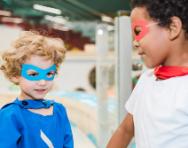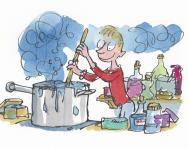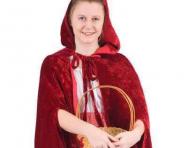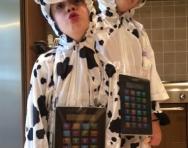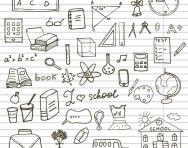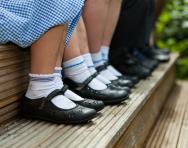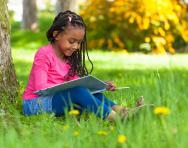18 must-have costume-making supplies for World Book Day and beyond

World Book Day, Roald Dahl Day, Maths Week… It sometimes feels as if you’re constantly being expected to produce outfits for your child to wear to school, and often with nowhere near enough notice. And while buying a costume is the easy option, it can get expensive – and doesn’t earn you as many Brownie points as making something from scratch.

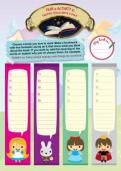
Claim A FREE Book Reviews Activity Pack!
- A huge collection of creative writing & reading comprehension resources
- Explore texts, deepen understanding, share opinions
- For Year 1 to Year 6
We asked crafter and blogger Tracey Witts to give us the rundown of the essential costume-making craft supplies every primary-school parent should have. With these in your craft stash, you’ll be able to run up a Harry Potter, Peter Rabbit or Katniss costume at a moment’s notice; gin and tonic optional!
Cardboard
Simple and cheap (or free!) but oh so effective, cardboard has many uses. Keep old cereal boxes and product packaging, large and small; they’re easy to stash away if you fold them flat. With just some strong tape and scissors, you can create characters such as Julia Donaldson's Stick Man or the Very Hungry Caterpillar by wrapping the cardboard around your child’s body and decorating it with pens or paint.
Paper plates
This versatile staple can save the day in many crafting emergencies. By painting a skin tone colour onto the plates and attaching them to a headband, they can become giant ears for Roald Dahl’s BFG, or cut them in half and staple them together to make fairy or angel wings. They’re also great for masks, shields and pointy Tin Man hats, rolled into a cone.
Faux fur
An essential for any animal-themed costume, it can be cut without fraying and attached to outfits using fabric glue if you don’t have time to sew. Use it as a mane for Aslan in The Lion, the Witch and the Wardrobe, sewn or stuck onto the hood and tummy area of an old hoodie, as giant furry paws for the bear from We’re Going on a Bear Hunt, or as purple prickles for the Gruffalo, glued onto the back of a brown t-shirt.
Felt
One of the most versatile fabrics, it doesn't fray and is easy to cut and glue. You can buy synthetic, wool blend or 100% wool; wool blend is more durable and easier to work with. By cutting out white bone shapes and sewing or gluing them onto a black top and trousers, you can create a skeleton from Janet and Allen Ahlberg's book Funnybones, or cut out giant buttons and stick to a brown top for the Gingerbread Man. Felt packs of assorted colours are affordable and give you lots of material to work with.
Feathers
Colourful, synthetic craft feathers can make perfect Indian headdresses by just stapling them to a strip of cardboard that fits around the head. Think Pocahontas or The Indian in the Cupboard.
Wool
Thick yarn plaited together is perfect for making hair: use chunky yellow wool attached to a hairband to make Rapunzel’s golden locks. It’s also great for making animal tails with no hassle.
Marker pens
A quick and easy hack for any busy parent with not enough hours in the day. Turn plain clothes into something special with very little effort, for example by using a black marker to add spots to a white t-shirt and leggings to make an adorable dalmatian from The Hundred and One Dalmatians.
Scraps of fabric or ‘fat quarters'
Colourful squares of fabric can be sewn together or glued onto cardboard for patchwork-style costumes. They could make a fantastic Elmer or Rainbow Fish costume, or used to add fake patches to clothes for Charlie Bucket, Mr or Mrs Twit or Mr Stink.
Stick-on gems
Self-adhesive crystals and pearls come in array of shapes and sizes, from hearts and diamonds to stars. They’re brilliant for creating majestic crowns for kings and queens by sticking them onto metallic card, or use them to embellish a dress for a Rainbow Magic fairy or Felicity Wishes.
Ribbons
Ribbon has a great variety of uses, depending on the colour and thickness, and can often be stapled rather than sewn to outfits. Use them to make strings for a puppet character like Pinocchio, for the bows in Pippi Longstocking’s pigtails, or as an easy bowtie for the Cat in the Hat.
Boning
Plastic boning, of the sort that’s used in fitted corsets, is great for making structured, 3D costume pieces like a pair of wings for Tinkerbell, a stiff-collared cape for the Queen of Hearts, or the splendid tail plumage of a peacock. Look for the type that’s already encased in fabric, and sew along both edges of the tape to hold it in place.
Interfacing
Also known by brand names like Vilene, interfacing can be applied to the inside of fabrics to add firmness, stiffness, structure and support. It comes in different weights, depending on how stiff you want the fabric to be. The easiest type to use is the iron-on (fusible) variety. Use it to give body and shape to Peter Pan’s hat, Toothless the dragon’s wings, or a wearable golden ticket from Charlie and the Chocolate Factory.
Elastic
One of the quickest and easiest ways to give shape and flexibility to fabric. To make an elasticated hem, fold the fabric over twice and stitch (or fabric glue) it in place to make a channel, then attach a safety pin to the end of the elastic and use it to push it through the hem. Make a tutu skirt for Angelina Ballerina by threading narrow elastic through a piece of stiff netting and drawing it tight to form the waistband.
Bondaweb
Bondaweb is brilliant for making your own iron-on logos, such as a Gryffindor crest or a superhero symbol. You simply iron it onto the wrong side of a piece of fabric, then draw your logo onto the paper side, remembering to draw letters and numbers back to front. Then cut out the shapes, peel off the paper backing and iron your motifs onto the costume, fabric side up.
Sew-on sequins and beads
While stick-on beads and gems are great for small areas, they’re fiddly to work with if you’re making a larger item. You can buy them already stitched together in one long strip, which makes it easy to apply them in long lines, adding sparkle to a Little Mermaid or Grace the Glitter Fairy outfit.
Eyelets
Press-on eyelets are easy to use with a handheld punch, and come in lots of different colours. They’re great for creating speedy lace-up features: fix two rows down the front of a t-shirt and lace them together to make a corset style top for Little Red Riding Hood, or mimic a pair of long boots for Dick Whittington or a musketeer by hemming a piece of brown or black fabric to fit around each leg, inserting eyelets along the long edge in pairs, and lacing them up.
Wadding
This cotton wool-type fibre is a craft box must-have. Use it to add bulk to outfits such as Mr Greedy or the Fat Controller, and to stuff legs or tails for characters like Incy Wincy Spider or Fantastic Mr Fox.
Old socks and tights
Don’t throw odd socks or laddered tights away, as they can be put to good use for many different costumes. Use old socks to cover hands and feet to create the illusion of paws for creatures like Mog or Hairy Maclary, or stuff tights with wadding (see above) to make legs for insects such as Charlotte of Charlotte’s Web fame.
Other handy costume-making extras
A glue gun, fabric glue and a basic sewing kit can make such a difference to those last-minute costume-making moments and are a must in any emergency craft box. If you have space for a proper sewing machine, it’ll vastly expand your repertoire, but you really don't need to sew in order to make a fantastic costume.
All the essential kit mentioned is available online, in craft shops and in local stationery shops.
Happy costuming!

Give your child a headstart
- FREE articles & expert information
- FREE resources & activities
- FREE homework help
